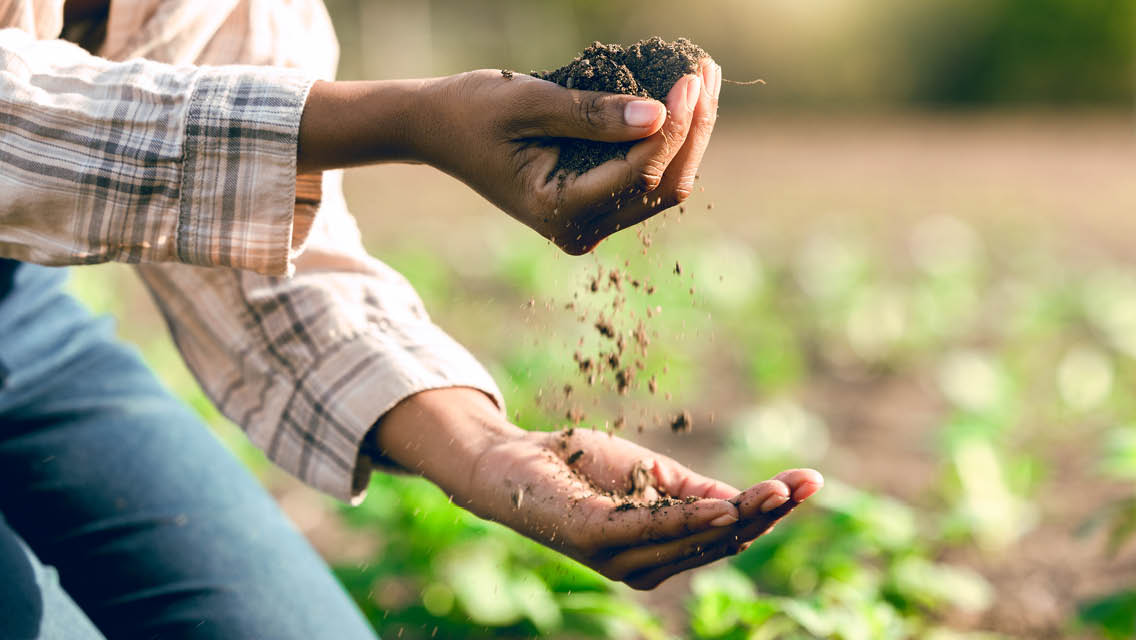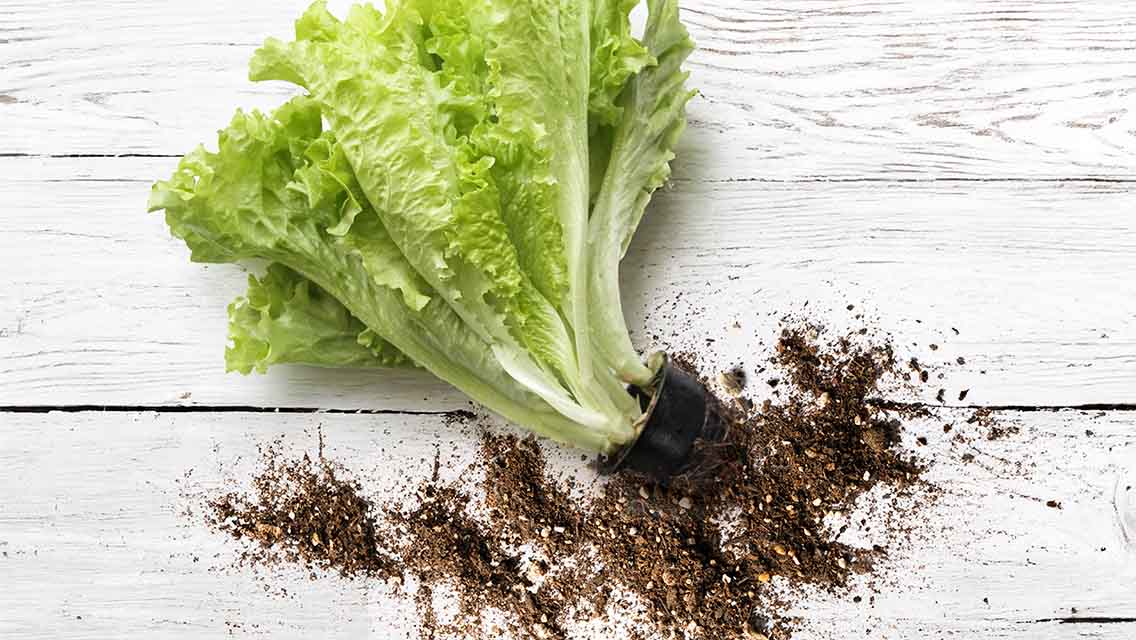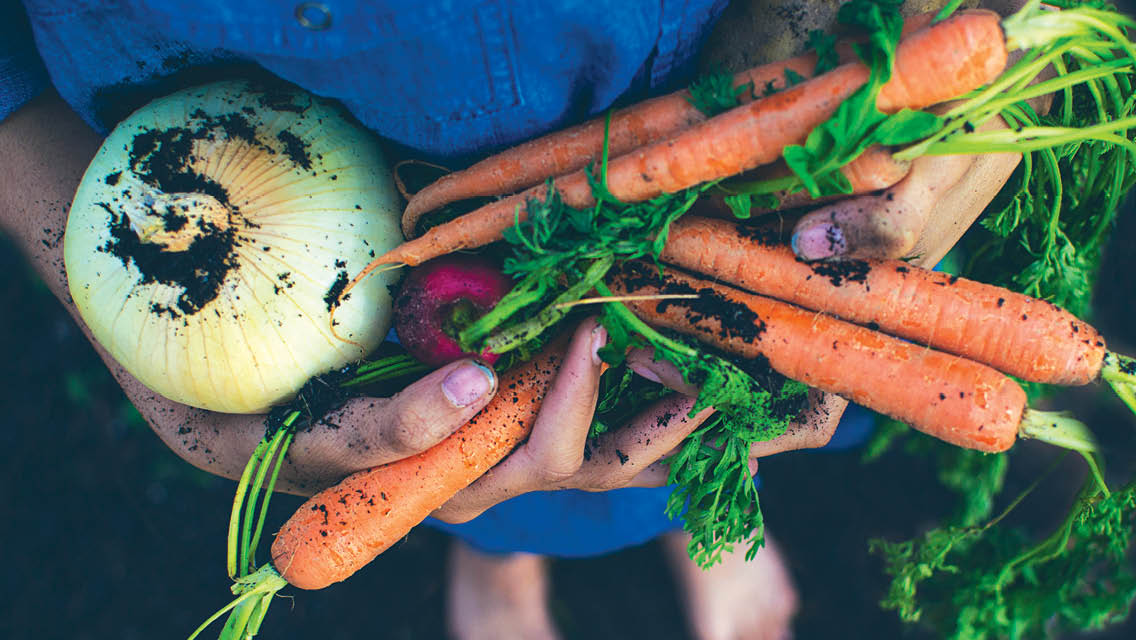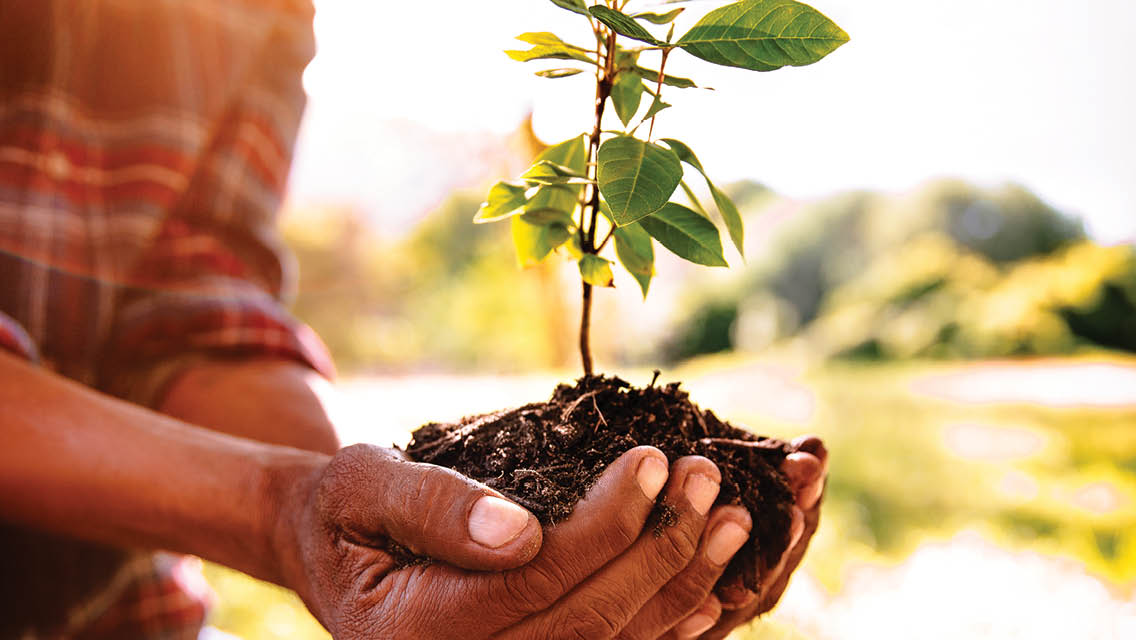You might conflate dirt and soil, but the distinction between the two is key to our health and well-being.
“The difference between dirt and soil is life,” says University of Washington geomorphology professor David Montgomery, PhD.
Soil life and how it affects us is the topic of his latest book, What Your Food Ate: How to Heal Our Land and Reclaim Our Health, coauthored with his wife, biologist Anne Biklé, MLA. They describe how a century of conventional agricultural practices has made our food less nutritious.
Conventional farming practices — sometimes even organic ones — disregard plants’ microbiomes, they say. For instance, plowing and tilling destroy the symbiotic relationship between plants and fungi. Montgomery likens plant-friendly fungi (a.k.a. mycorrhizae) to miners and truckers. “These amazing fungi prospect for soil minerals and transport them back to plants.”
When plows sever fungal networks, a crop’s mineral density suffers. “Soil is a plant’s stomach, and soil life is its microbiome,” he explains. “Conventional farming has given our crops an upset stomach.”
At the same time, the overuse of chemicals, such as nitrogen fertilizers, often damages the soil’s health. “We want the soil microbiome — as well as our own microbiome — to function normally, and this means working with them rather than altering them,” Biklé notes.
In addition, decades of breeding crops for size and yield, versus for nutrients, also contributes, says Montgomery. For example, a stalk of wheat today bursts with twice as many kernels as its predecessors, but the plant’s root structure has not changed, so it draws the same quantity of iron from the soil and spreads it twice as far, resulting in what’s called the dilution effect.
Montgomery and Biklé offer the following tips to help you maximize the nutrients in your food.
- Buy local, buy fresh. Farmers’ markets are your best sources for produce raised by stewards who protect and restore soil life.
- Rotate between farm stands. Produce from two different farms, even in close proximity, have different suites of minerals and phytonutrients based on how crops are grown and the types of rocks beneath a farm. Eating from a variety of farms is a way to get a wider range of minerals.
- Eat a rainbow. “Maximize your body’s exposure to nutrients by eating widely across the plant kingdom,” says Biklé.
This article originally appeared as “Soil Depletion = Less Health Food” in the September 2023 issue.





This Post Has 0 Comments